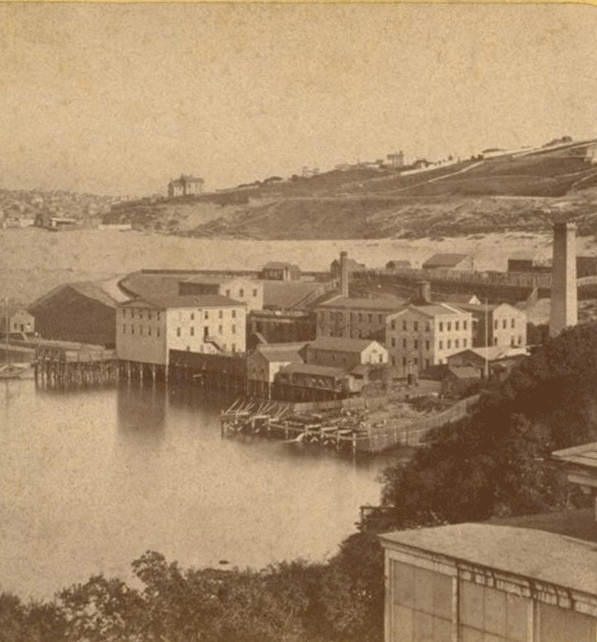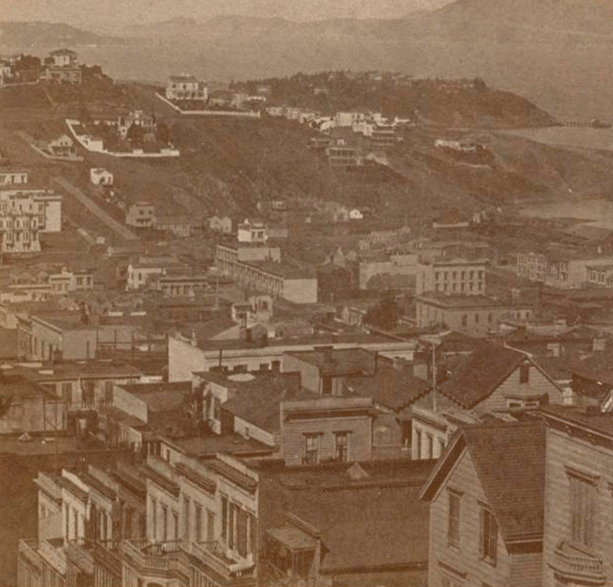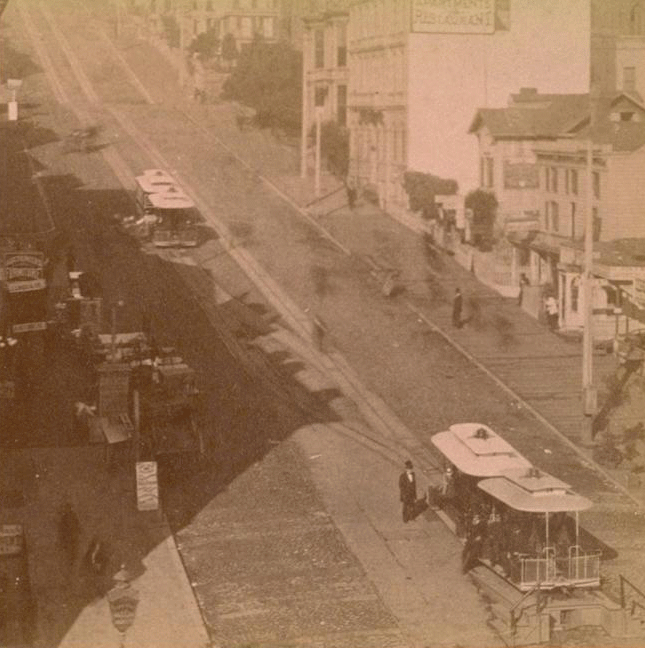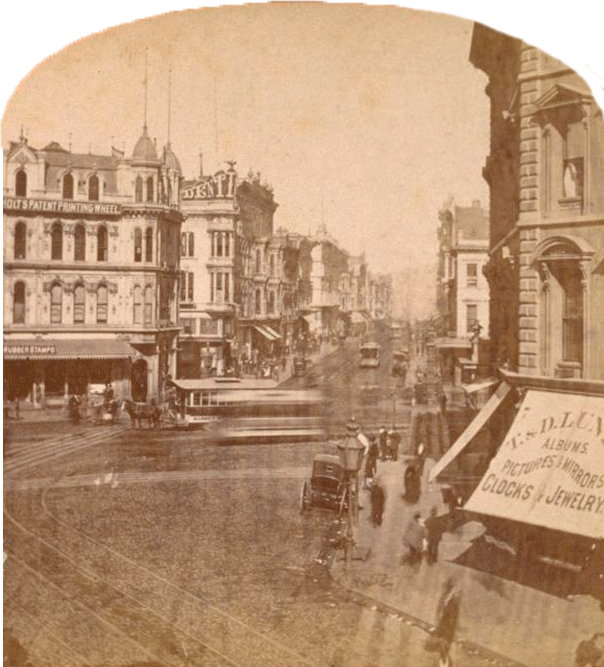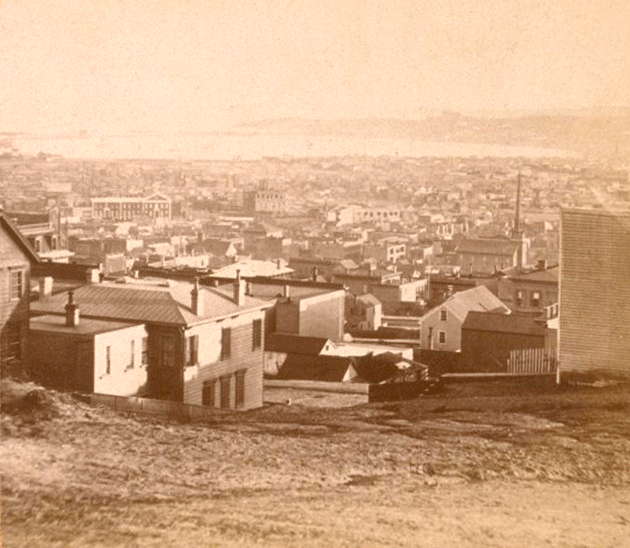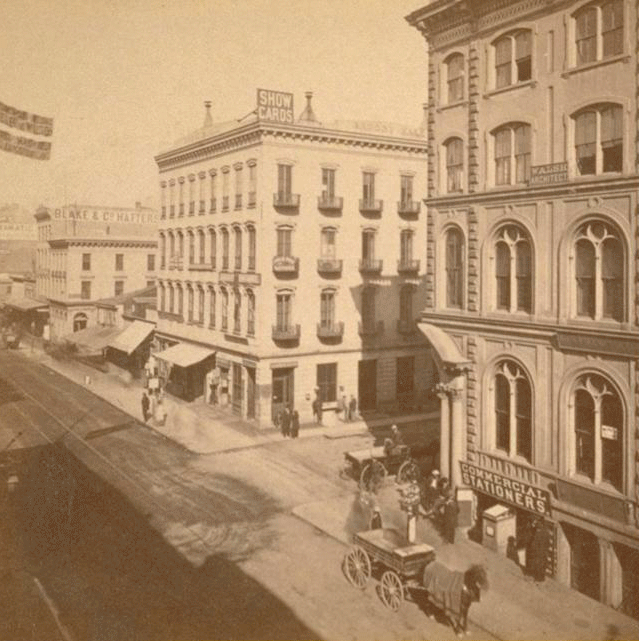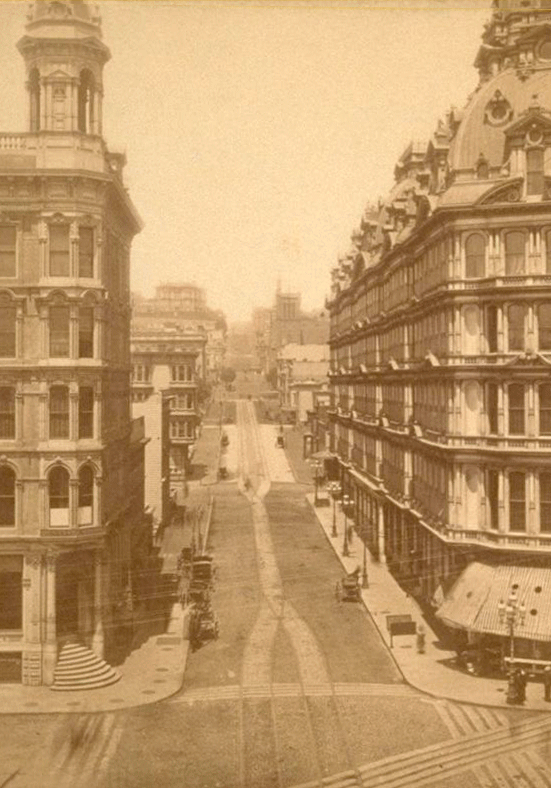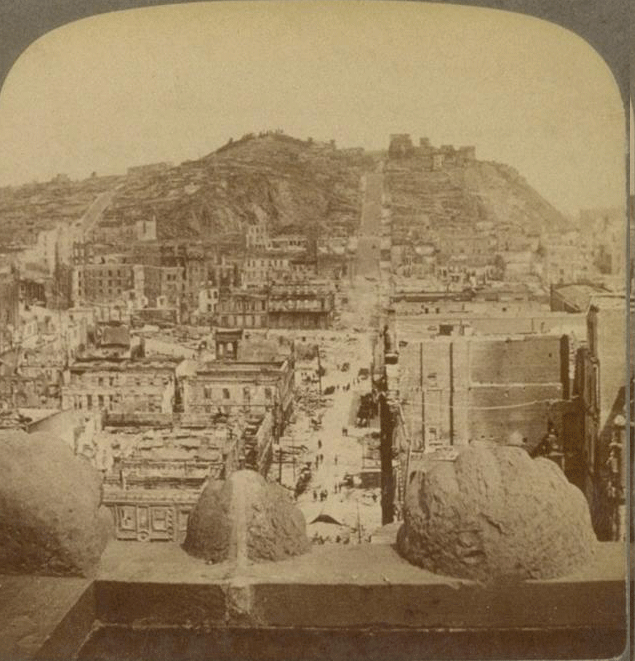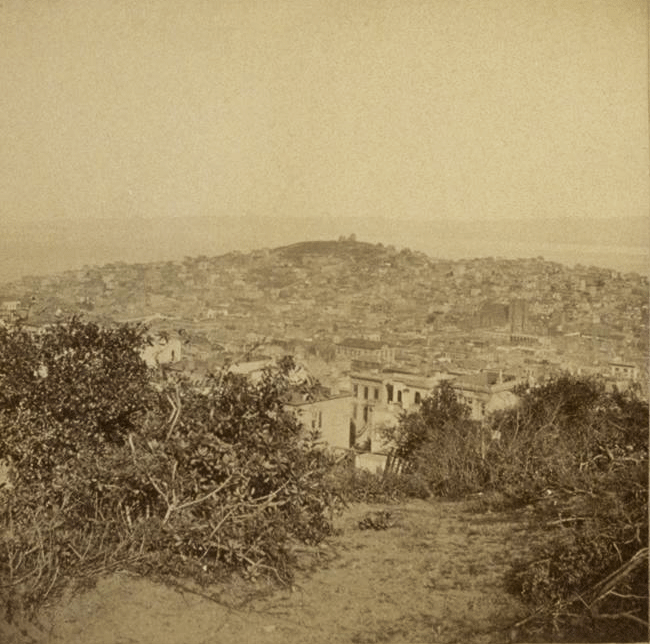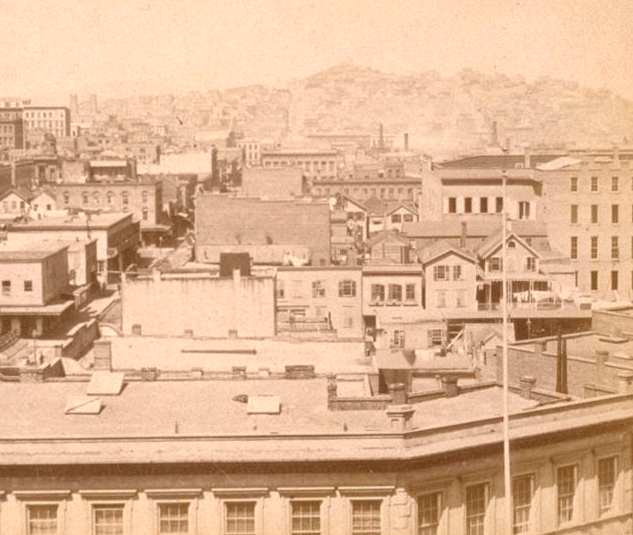Stereographs: Difference between revisions
No edit summary |
Photolizard (talk | contribs) m (added a link between the two pages) |
||
| Line 70: | Line 70: | ||
More continued on the | More continued on the [[Stereographs continued|Next Page]]... | ||
[[category:Early SF]] [[category:Earthquakes]] [[category:Buildings]] [[category:1860s]] [[category:1870s]] [[category:1880s]] [[category:1890s]] [[category:1900s]] [[category:1906]] [[category:Photography]] [[category:North Beach]] [[category:Russian Hill]] [[category:Downtown]] | [[category:Early SF]] [[category:Earthquakes]] [[category:Buildings]] [[category:1860s]] [[category:1870s]] [[category:1880s]] [[category:1890s]] [[category:1900s]] [[category:1906]] [[category:Photography]] [[category:North Beach]] [[category:Russian Hill]] [[category:Downtown]] | ||
Latest revision as of 13:36, 23 June 2011
Historical Essay
by Liz Wood and Caleb Swann
A stereograph is made up of two images, taken from slightly different angles, to mimic the distance and difference between the views of the human eye. When viewed through a stereoscope, or layered like they are here, the images combine to create a three dimensional view.
Stereography has been around almost as long as photography itself, however it reached perfection in the early 1850's with the development of the commonly known stereoscope and the beginning of international trading of stereo cards. Its greatest popularity lasted from that time until the early 1900's. Stereocards were wildly popular because of their appeal to the "armchair traveler". They were easily collectible and they gave people a realistic view of places they could not visit. By the late 1800's stereography was a profession and many notable photographers such as Carleton Watkins and Edward Muybridge dabbled in stereography, though not necessarily commercially. There were stereographers who focused their work on one specific place, while others traveled nonstop to produce a large variety of views and places. Still others focused on tourists and photographed solely at resorts, and there were some who worked around events and disasters, like some of the photographs here from the 1906 earthquake.
The photographs here are from the 1860's to the early 1900's and show a variety of scenes around San Francisco. The subjects range from the city to its inhabitants to the destruction and reconstruction after the earthquake. They are from a few different photographers, Edward Muybridge and Carleton Watkins included, and a few stereo card companies like Continent Stereoscopic Co. and Thomas Houseworth & Co.. The originals, along with many others of San Francisco and California can be found at The Online Archive of California
All Images Courtesy of The Bancroft Library
University of California, Berkeley
Pioneer Woolen Mills, Black Point (Photographed by Lawrence & Houseworth)
Golden Gate from Telegraph Hill (Photographed by J. J. Reilly)
Kearny Street terminus California Street Cable R. R. (Photographed by Carleton Watkins)
Kearney Street from Third Street (Photographed by J. J. Reilly)
San Francisco from the corner of Jones and California Streets, looking towards Mission Bay (Photographed by Thomas Houseworth & Co.)
Montgomery Street from Market Street (Photographed by Lawrence & Houseworth)
Corner Montgomery and Sacramento Streets (Photographed by Carleton Watkins)
Looking up Powell Street from Market Street (Photographed by Continent Stereoscopic Co.)
Slowly clearing away the wreckage of earthquake and fire, taken from the Kohl Building (Photographed by Underwood & Underwood)
Telegraph Hill, from Russian Hill (Photographed by Edward J. Muybridge)
Telegraph Hill, taken from the Nucleus Hotel, corner of Market and Third Streets (Photographed by Thomas Houseworth & Co.)
More continued on the Next Page...

